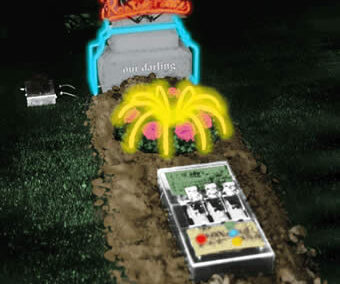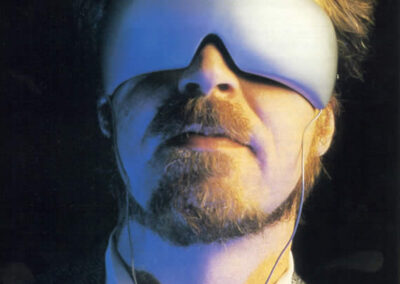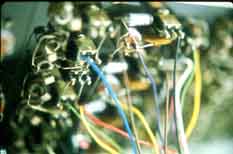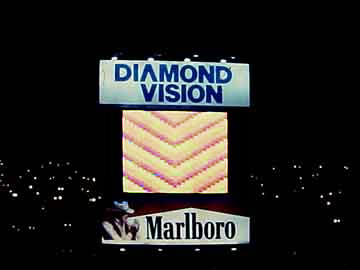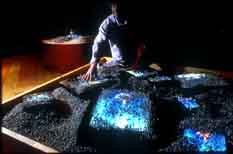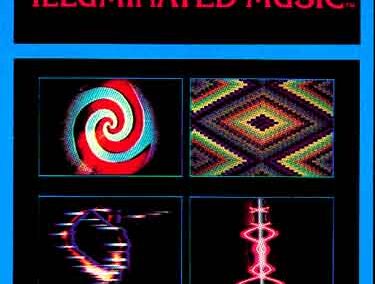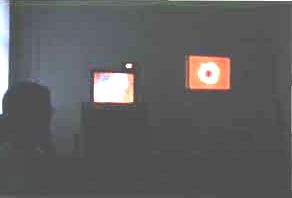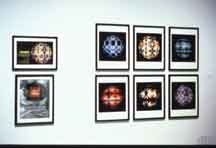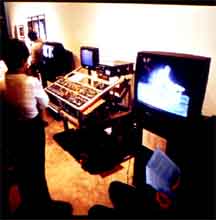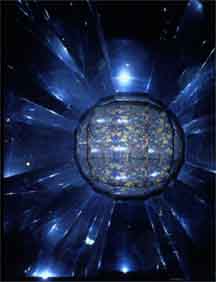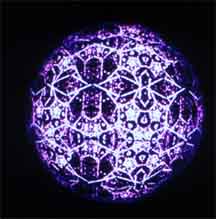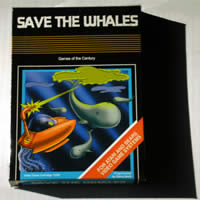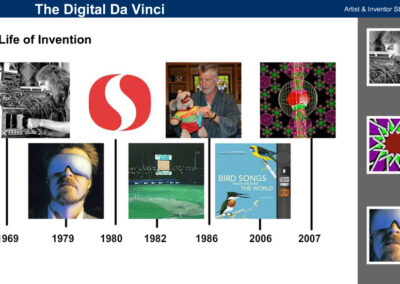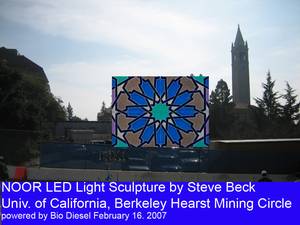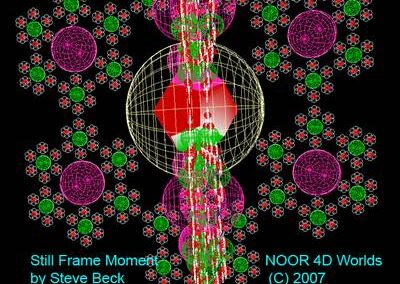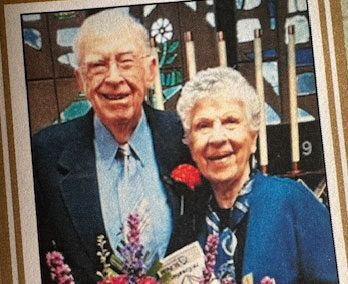EAT
Experiments in Art and Technology, a movement from the 1960’s

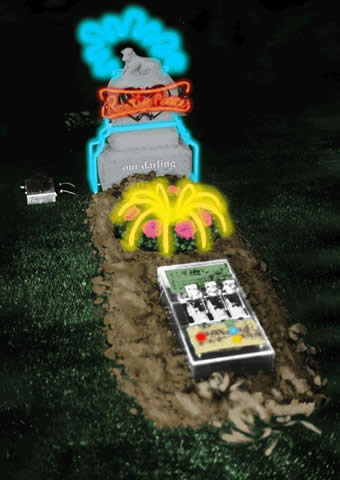
In 1966 engineer Billy Kluver, artist Robert Rauschenberg and others launched “EAT – Experiments in Art and Technology” at the 60th Street Armory show in New York City. Since then, many have followed their lead.
In 1968 Steve Beck became a charter member of the Chicago chapter of EAT, based at the Museum of Contemporary Art on east Ohio Street in downtown Chicago.
There he met a fellow member, sculptor Paul Mohr, and they collaborated on an electronic multimedia sculpture entitled “Our Darling” which included 18 separate neon tubes set in and around and above a granite tombstone with lamb, all set upon a 10 foot square section of Astroturf with 300 pounds of earth soil into which was embedded an electromechanical analog computer of Beck’s design and fabrication which controlled the sequencing of the neon tubes as well as fading the ambient room lighting up and down from light to darkness.
The flashing sequence was controlled by a primitive digital computer build with NAND and NOR gates using transistors, unistable multivibrators for timing circuits, mechanical stepping relays and slave relays with triacs to control separate 3,000 volt AC transformers to activate the neon lights.
The repeating pattern of the sequencing required 24 days for a complete sequence before it repeated the same pattern.
The “Our Darling” neon tombstone sculpture was exhibited in Chicago at the Contemporary Art Museum in 1969, then it was presented at the Ward Nasse gallery in Soho in New York City in 1971, from whence it was acquired by a private collector. Since then it has been said that the piece was later aquired by Mr. Steve Wynn of Las Vegas, Nevada, who plans to place it on his remains at his final resting place someday.

